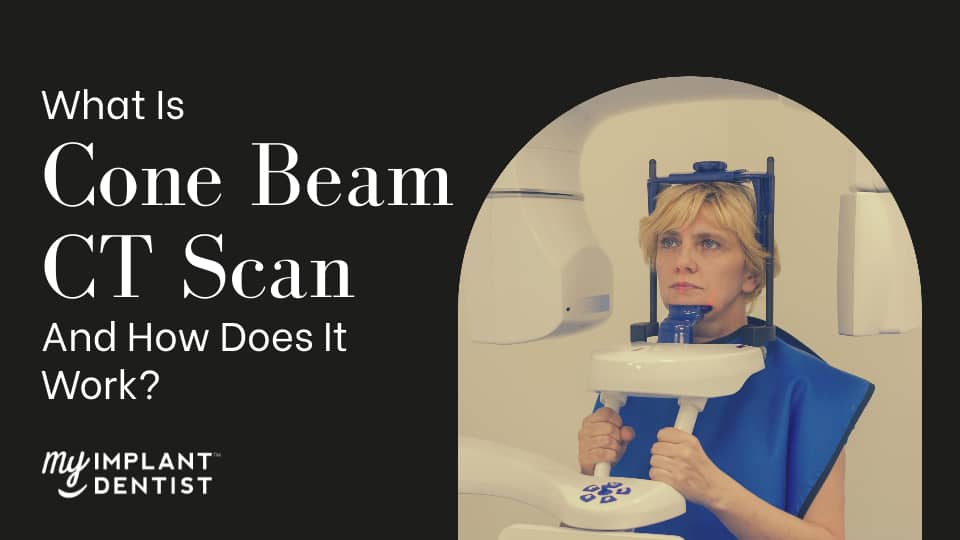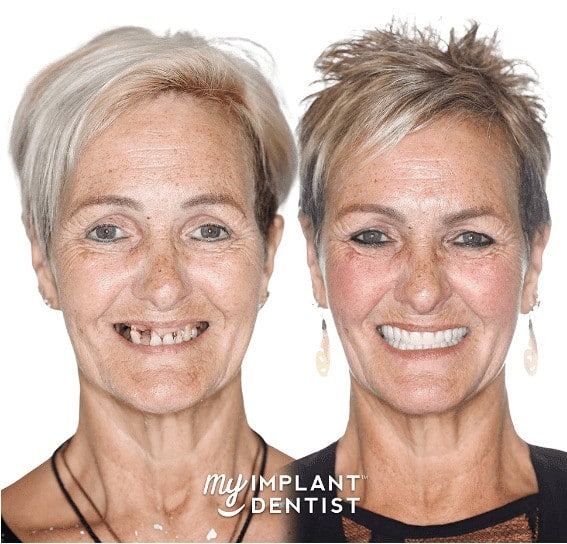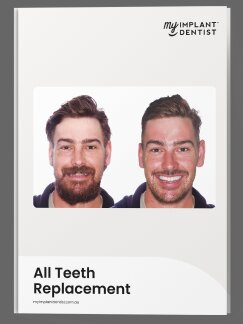- The best dental care for root canal and dental implant diagnosis and analysis is a Cone Beam CT scan
- A CBCT scan is painless and fast.
- A Cone Beam CT scan can take up to 600 images at the same time in less than a minute.

Contents
What Is A Cone Beam CT Scan?
A Cone Beam CT scan is an advanced imaging technique used in dentistry and maxillofacial surgery. It provides a detailed three-dimensional view of the teeth, jaw, and surrounding structures, unlike traditional X-rays. It offers high-resolution and distortion-free images, allowing healthcare professionals to diagnose and evaluate dental abnormalities more accurately.
How Does Cone Beam CT Work?
The Cone Beam CT scan operates using a unique mechanism that sets it apart from traditional X-ray systems. At the heart of its operation is a cone-shaped X-ray beam, hence the name “Cone Beam”. This beam rotates 360 degrees around the patient’s head, capturing multiple images in a single rotation.
As the patient sits still, the X-ray source and detector move in unison around the patient. The X-ray beam projects a series of images onto the detector with each rotation, capturing a different perspective of the patient’s anatomy each time. These images are known as “basis images”.
The basis images are then digitally processed and compiled by a sophisticated computer algorithm to create a single, three-dimensional representation of the patient’s oral and maxillofacial region. This 3D image can be viewed and manipulated on a computer screen, allowing for a comprehensive evaluation of the patient’s dental structures, soft tissues, nerve paths, and bone.
This entire process happens swiftly, often within a matter of seconds, making the Cone Beam CT scan a quick, efficient, and highly effective tool for diagnostic imaging in dentistry and maxillofacial surgery.
What Are The Benefits Of A Cone Beam CT Scan?
Cone Beam CT scans have revolutionised the field of dental and maxillofacial imaging. Here are some of the key benefits:
- Detailed 3D Imaging: Unlike traditional 2D X-rays, Cone Beam CT scans provide three-dimensional images. This allows for a more comprehensive view of the teeth, jaw, and surrounding structures, facilitating accurate diagnosis and effective treatment planning.
- High-Resolution Images: Cone Beam CT scans offer high-resolution, distortion-free images. This level of detail enables doctors to detect and evaluate the extent of dental abnormalities with greater precision.
- Non-Invasive and Painless: The procedure for a Cone Beam CT scan is non-invasive and painless, making it a comfortable experience for patients.
- Quick Procedure: The entire scanning process takes less than a minute, making it a quick and convenient diagnostic tool.
- Lower Radiation Dose: Cone Beam CT scans expose patients to a lower dose of radiation compared to conventional CT scans, making them a safer choice without compromising on the quality of the images obtained.
- Versatile Applications: Cone Beam CT scans are used in various fields of dentistry, including orthodontics, implantology, endodontics, and oral surgery. They are also used for the evaluation of the temporomandibular joint, assessment of the jaw and face for surgery, and detection of jaw tumours.
- Improved Patient Care: By providing a clear and detailed view of the patient’s anatomy, Cone Beam CT scans enable healthcare professionals to deliver more precise and effective treatment, leading to improved patient care and outcomes.
How Is The Procedure Performed?
The procedure for a Cone Beam CT scan is straightforward and painless. The patient is seated in the examination room, with their chin resting on a small support shelf for accurate positioning.
The scanner then moves around the patient’s head, capturing multiple images from various angles. These images are subsequently processed by a computer to generate a 3D image of the patient’s dental and maxillofacial region.
The entire process takes less than a minute, making it a quick and convenient diagnostic tool.
How Much Is A Cone Beam CT Scan Cost?
The cost of a Cone Beam CT scan in Australia varies, but it generally ranges from AUD $250 to AUD $350 per scan, depending on factors such as the location, the imaging centre, and additional services required.
Does Insurance Cover Cone Beam CT Scan?
Medical insurance coverage for Cone Beam’s CT scan was off the books for a while. But slowly with the wide acceptance of this procedure, insurance companies are falling in line by providing partial or full coverage. To be certain, you need to make inquiries.
Also, you can opt for a separate dental coverage specifically made for your Cone Beam CT scan.
Note that this policy is not included because of the newness and uncertainty surrounding its emergence.
faqs
Is A CT Scan The Same As A Cone Beam?
Although they are quite similar, the traditional CT scan varies in specifications from the Cone Beam. Traditional CT scan involves 2D imaging, intrusive testing, and longer test hours. But the Cone Beam is simplified with faster scan time, a better quality of images, and an easier testing method.
Adding to the bulk of differences between both, root canal and deep ailments specifically need the CBCT to delve deeper than the average CT scan. This is why it is acceptable if you place the CBCT as the best way to diagnose and treat dental issues.
How Long Does A Cone Beam CT Take?
The maximum Cone Beam scan time for a full mouth test is a minute and the shortest scan time is 20 seconds. In all, it is a really quick procedure.
How Do I Prepare For A CBCT Scan?
A Cone Beam scan does not require intensive preparation. When you get to the dentist’s, you will have to remove jewellery or any metal objects you have on, after which you can proceed.
How Much Radiation Is In A Cone Beam CT?
There is no static measure of radiation in a cone Beam CT scan. It depends on your size, the display quality, and your interest points. The amount is between 18-200úsv. Compared to other x-ray procedures, this is safer. Although the radiation rate most times seems so low, getting a Cone Beam CT scan too often may have adverse effects on your health. It is recommended to be done occasionally or only when needed to spot immediate discomfort.
Which Is Better, CT Or CBCT?
A CBCT is often recommended in cases involving the mouth’s bones and tissue. This can be termed as not easy to identify physical or underlying conditions. It’s a way to go beyond the surface, see the root cause of symptoms, and evaluate the effect of treatment methods. Whereas the CT will also give you dental care but not in clear details like its more advanced counterpart.
Does CBCT Scan Hurt?
Absolutely not. This scan is painless and fast. You’d barely feel anything while having one. And even after it is done, you can still expect to feel normal.
Why Do We Need CBCT?
There are numerous reasons why you shouldn’t toy with getting occasionally checked using CBCT. A CBCT will help you diagnose the exact problems you are facing and recuperation progress all in record time.




















